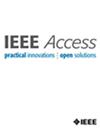Metering Automation System 3.0 Base Version Based on Machine Learning
IF 3.6
3区 计算机科学
Q2 COMPUTER SCIENCE, INFORMATION SYSTEMS
引用次数: 0
Abstract
The accurate identification of equipment base versions in Metering Automation System 3.0 (MAS 3.0) is critical for ensuring interoperability and maintenance efficiency in modern smart grids. However, traditional machine learning methods and standalone deep learning architectures struggle to balance spatiotemporal feature extraction, computational efficiency, and deployment constraints for high-frequency multivariate metering data. This study proposes a hybrid DSCNN-CBAM-BiLSTM framework that synergistically integrates depthwise separable convolutions, dual attention mechanisms, and bidirectional temporal modeling to address these challenges. The depthwise separable convolutional neural network (DSCNN) minimizes parameter overhead while capturing spatial correlations across distributed grid nodes, followed by convolutional block attention modules (CBAM) that dynamically recalibrate channel and spatial features to amplify discriminative patterns. Bidirectional LSTM (BiLSTM) layers then model long-range temporal dependencies in both forward and backward directions, enabling robust contextual analysis of energy consumption sequences. Validated on 14 TB of operational data from China Southern Power Grid, the framework achieves 96.7% classification accuracy with an inference latency of 8.9 ms—outperforming CNNs (89.2%), Transformers (90.5%), and GRUs (92.1%) while reducing GPU memory usage by 35.7–72.7%. Edge deployment tests on NVIDIA Jetson AGX Xavier demonstrate real-time compatibility with IEC 61850-7-420 protocols, maintaining <15 ms latency at 200-node resolution. These advancements establish a highly effective and resource-efficient framework. For resource-efficient, edge-deployable analytics in smart grid infrastructure, effectively bridging the gap between high-accuracy version identification and industrial computational constraints.基于机器学习的计量自动化系统3.0基础版
计量自动化系统3.0 (MAS 3.0)中设备基础版本的准确识别对于确保现代智能电网的互操作性和维护效率至关重要。然而,传统的机器学习方法和独立的深度学习架构难以平衡高频多变量计量数据的时空特征提取、计算效率和部署限制。本研究提出了一个混合DSCNN-CBAM-BiLSTM框架,该框架协同集成了深度可分离卷积、双重注意机制和双向时间建模来解决这些挑战。深度可分离卷积神经网络(DSCNN)在捕获分布式网格节点之间的空间相关性时,将参数开销最小化,随后是卷积块注意模块(CBAM),该模块动态地重新校准通道和空间特征,以放大判别模式。双向LSTM (BiLSTM)层然后在向前和向后方向上建模长期时间依赖性,从而实现对能量消耗序列的鲁棒上下文分析。在中国南方电网14tb的运行数据上进行验证,该框架的分类准确率达到96.7%,推理延迟为8.9 ms,优于cnn(89.2%)、Transformers(90.5%)和gru(92.1%),同时GPU内存使用率降低35.7% - 72.7%。在NVIDIA Jetson AGX Xavier上的边缘部署测试证明了与IEC 61850-7-420协议的实时兼容性,在200个节点分辨率下保持<15毫秒的延迟。这些进展建立了一个高效和资源节约型的框架。在智能电网基础设施中实现资源高效、边缘可部署的分析,有效地弥合了高精度版本识别与工业计算约束之间的差距。
本文章由计算机程序翻译,如有差异,请以英文原文为准。
求助全文
约1分钟内获得全文
求助全文
来源期刊

IEEE Access
COMPUTER SCIENCE, INFORMATION SYSTEMSENGIN-ENGINEERING, ELECTRICAL & ELECTRONIC
CiteScore
9.80
自引率
7.70%
发文量
6673
审稿时长
6 weeks
期刊介绍:
IEEE Access® is a multidisciplinary, open access (OA), applications-oriented, all-electronic archival journal that continuously presents the results of original research or development across all of IEEE''s fields of interest.
IEEE Access will publish articles that are of high interest to readers, original, technically correct, and clearly presented. Supported by author publication charges (APC), its hallmarks are a rapid peer review and publication process with open access to all readers. Unlike IEEE''s traditional Transactions or Journals, reviews are "binary", in that reviewers will either Accept or Reject an article in the form it is submitted in order to achieve rapid turnaround. Especially encouraged are submissions on:
Multidisciplinary topics, or applications-oriented articles and negative results that do not fit within the scope of IEEE''s traditional journals.
Practical articles discussing new experiments or measurement techniques, interesting solutions to engineering.
Development of new or improved fabrication or manufacturing techniques.
Reviews or survey articles of new or evolving fields oriented to assist others in understanding the new area.
 求助内容:
求助内容: 应助结果提醒方式:
应助结果提醒方式:


